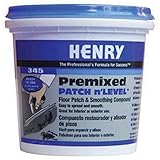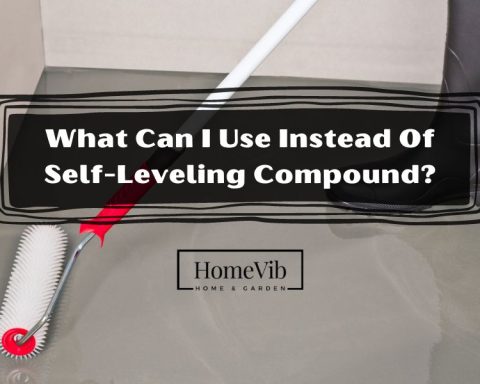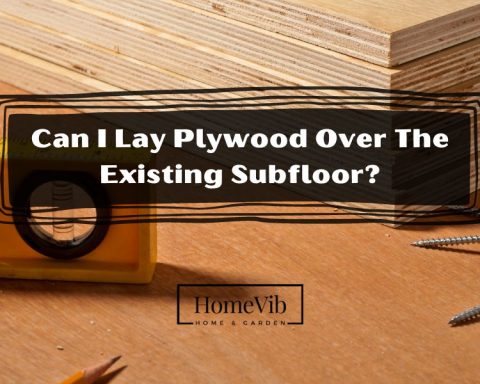A gap or holes in the subflooring of your home is a natural depreciation process as a structure grows old. It doesn’t necessarily mean that it is degrading in terms of stability, but the main concern here is infestations from pests like vermin, insects like termites, or molds.
So how do you fill those holes in the subfloor?
The most popular method of fixing subfloor holes is through patching solutions like waterproof epoxy brands, such as Fix-It-All, or cement-based compounds for larger holes. Another popular compound is caulk which works perfectly on smaller gaps or holes.
But suppose you want to learn more about the subject. In that case, today’s article will provide essential insights on effectively dealing with gaps and improving the subfloor’s reliability.
Can You Patch the Subfloor?
In general, you can patch the subfloor with cement-based or epoxy-based compounds. I will explain the patches available in detail in the following sections.
And you must remember that you must patch the holes or gaps in your subfloor as soon as you notice them. Although it doesn’t affect the subfloor initially, it can progressively weaken the wood, which would cause the foundation to fall apart eventually.
Molds also thrive in dark areas, such as inside the gaps. Molds affect air circulation that emits a foul odor. It also releases harmful pathogens that could risk your health and those living with you.
What Do You Fill Subfloor Holes With?
The most basic way to fill the holes and gaps is by using patching solutions like the application of caulk for small gaps in the subflooring.
Gap Filler for Hard Surface Floor
For larger holes, epoxy and cement-based compounds are necessary to close the gaps effectively.
If you see heavy deprecation on the floors, you may have to replace a portion or the entire subflooring.
How Do You Fix Subfloor Holes And Gaps?
The following are four methods available at your disposal to fix the holes and gaps in your subflooring and prevent further damage.
First Method: Application of Fillers
The first remedy is using fillers or patching solutions like the Fix-It-All brand.
However, you must determine the damage level to help you find a suitable compound. For example, smaller gaps or holes are fixable by a caulker alone, whereas cement-based compounds are more suitable for larger damages.
Caulk is enough to prevent the expansion of the gaps. In addition, they are cheap and very easy to apply.
Nevertheless, experts recommend that the product be waterproof so the compound won’t dissolve when exposed to humidity or moisture.
Second Method: Replace with a Piece of Wood
If the damage progressed substantially due to terminations or rotting, you might have to take out the piece of wood that deteriorated and replace them with a fresh one.
You don’t have to replace entire floorboards when the damage is only a small portion of the structure.
Third Method: Replace the Floorboards
But if you see a great deal of damage to the floorboards and they are irreparable, you can remove the entire subflooring and install a new one. It may take time and money, but it is worth your while to strengthen the foundations of your home.
Fourth Method: Stack the Floorboards Together
Whether installing a new subfloor or replacing them, it is ideal that you stack them close together to prevent moisture or pests from entering the gaps.
Also, the recommendation is that the space between them should be at least 1/8 apart to allow the wood to expand upon consistent exposure to weathering.
What Causes Large Gaps And Holes In Subfloors?
You may also be wondering what causes the holes and gaps to occur. The following are the factors that you have to take note of that damage your floorboards.
Failure To Do Repairs When Needed
First and foremost, the leading cause of gaps and holes is failure to make repairs once you notice the damage. It may seem benign initially, but it will progressively worsen over time. Therefore, you must take action when observing them, no matter how small the damage is.
Failure to Double Check the Subflooring Before Applying the Final Layer
A common mistake homeowners make is the failure to inspect the floorboards first before you install the final layer of the flooring. You must double-check if there are gaps or cracks and make repairs once you notice them.
High Level of Humidity
Persistent exposure to moisture and other liquid substances depreciates wood faster. Thus, you must check the room’s humidity level, especially if it is a new installation and it’s during the winter when moisture is very high.
Improper Usage of Nails
Another uncommon but possible cause of the damage is picking the wrong set of nails or an improper way of handling them. The improper nailing or choosing the wrong nails moves them around, resulting in squeaking noise. So the solution is to inspect the nails and hit them once more if you see them sticking out.
The Floor Adhesive Didn’t Dry Properly
Before allowing foot traffic inside the room, it is best to let the floors dry properly and prevent them from misaligning, which causes gaps on the subfloor.
How Do You Fix a Rotted Subfloor Underneath?
Rotting is a natural process that occurs in organic materials like wood. But the good news is that you can avoid them and improve the usefulness of the subflooring.
But if the rotting happens underneath the floorboards, below are the solutions you can do to remedy the issue.
Assess the Rot
You have to assess the damage first to help determine how to fix the rotting underneath the subfloor.
To check the extent of the damage, you have to go down to the basement, cut a piece of the drywall, and pull out the insulation.
Identify the Cause of the Damage
Finding the root cause of the damage can save you a lot of time and money fixing them when it happens again. For example, if the gap or hole is due to moisture, then determine whether it is coming from leaks or whether the room has a high humidity level.
Or, if it is due to molds, you may have to hire a professional to exterminate them and hinder further growth.
FAQ
Does the Subfloor Have To Be Perfect?
The subfloor needs to have level ground. The uneven ground creates gaps that could lead to moisture and pest from thriving inside the small space.
If gaps are unavoidable, you must note that the unevenness should be not greater than 3/16 inches for a 10-foot space or 1/8 inch for a 6-foot span. You also have to be sure that the subfloor isn’t sloping for more than ½ inch for over 6 feet or 25mm per 1.8 meters.
What Is the Best Material To Use For a Subfloor?
Plywood has been a popular subflooring material since the 50s, and it is still true in the present generation because they are flexible yet reliable that should last as long as the house.
What Thickness Should a Subfloor Be?
The plywood should generally have a minimum thickness of approximately 5/8 inches.












